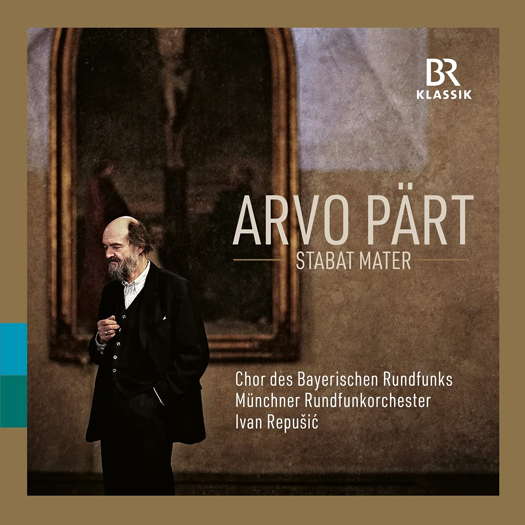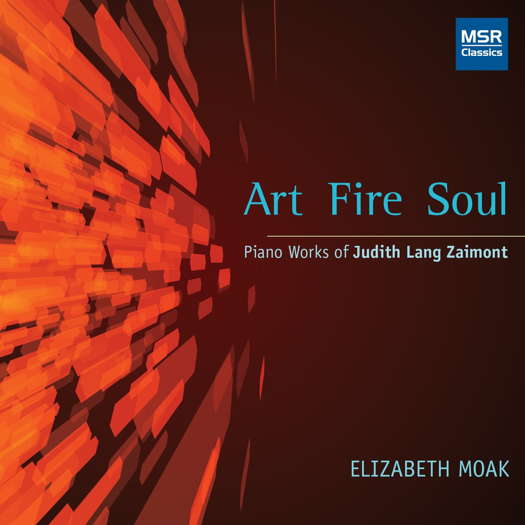 FEEDBACK: She said WHAT? Read what people think about our Classical Music Daily features, and have your say!
FEEDBACK: She said WHAT? Read what people think about our Classical Music Daily features, and have your say!

Music to Unite People
GIUSEPPE PENNISI listens to music by Arvo Pärt
'... an excellent selection ...'
Arvo Pärt does not like to give interviews. In September 2016, at the annual Festival named Sagra Musicale Umbra, we happened to spend a few days in the same hotel. As most of the guests were speaking Italian, I noticed an old - he was eighty at the time - slender man sitting alone for breakfast. I asked if I could join him. He was quite pleased to have someone to converse with. He did not know Perugia. Thus, in the few days of the festival, I accompanied him to see the Umbria Art Gallery and a few other sights. Then, with his agreement, I published an extensive interview in the Italian daily Avvenire. The main point was that 'he writes music to unite people'.
This key message could be the title of this BR Klassik CD on which Munich Radio Chorus and Orchestra presents an anthology of Pärt's compositions. The Croatian Ivan Repušić conducts the orchestra. The chorus is prepared by Florian Benfer.
The CD encompasses six different pieces of religious music. In my view, the most important of them is Pärt's rendering of the medieval Stabat Mater generally attributed to Jacopone from Todi. Pärt composed it in 1985 to a commission by the Alban Berg Foundation. It was originally scored for a trio of singers: soprano, alto, and tenor; and a trio of string instruments: violin, viola, and violoncello. A version with expanded forces (mixed chorus and orchestra) was premiered on 12 June 2008 at the Großer Musikvereinssaal during the Wiener Festwochen 2008 with Kristjan Järvi conducting the Singverein der Gesellschaft der Musikfreunde in Wien and the Tonkünstler-Orchester Niederösterreich. This new version was commissioned by the Tonkünstler-Orchester. The version on this CD is this second expanded score.
Stabat Mater is composed in Pärt's characteristic tintinnabuli style, which he has employed nearly exclusively since 1976, in which arpeggiations of a major or minor triad are combined with ascending or descending diatonic scales.
The text of the Stabat Mater consists of ten stanzas. This form is characteristic of the later metrical sequence. As in several of Pärt's works, measure breaks are determined not by regular groupings of beats and stress, but rather by the words themselves. Pärt divides the ten stanzas into four groups, separated by instrumental interludes of a vastly different musical character. The four groups create a perfectly symmetrical structure. The celestial voices of the chorus are excellent, especially in their interplay with the orchestra.
Listen — Arvo Pärt: Stabat mater dolorosa (Stabat Mater)
(track 6, 4:44-5:20) ℗ 2021 BRmedia Service GmbH :
Listen — Arvo Pärt: Fac me plagis (Stabat Mater)
(track 9, 0:00-0:53) ℗ 2021 BRmedia Service GmbH :
The Stabat Mater has a duration of almost half an hour. The other pieces are much shorter. Fratres (Brothers) was composed in 1977, when Estonia was still part of the Soviet Union. (Pärt left Estonia in 1980 and found refuge in West Berlin, where he lived in ascetic poverty.) In its austerity and solemnity, Fratres is reminiscent of a communal prayer. It seems to anticipate Pope Francis' recent encyclical Fratelli Tutti (We are all brothers).
Listen — Arvo Pärt: Fratres
(track 1, 0:00-0:58) ℗ 2021 BRmedia Service GmbH :
Although Silouan's Song is a work for string orchestra, it still draws its inspiration from a religious text. Father Silouan (1866-1938), named in the work's title, was a Russian mystic who lived a life of simplicity and humility, and wrote a series of moving meditations encapsulating the essence of his spirituality. Pärt quotes Silouan's phrase 'My soul yearns after the Lord' as a subtitle for music which in its fervent, impassioned phrases and echoing cloister silences, breathes the inexpressible longing of the devout supplicant. This is instrumental music regulated and inspired by spiritual discipline, and illuminated by liturgical beauty. Silouan's Song is dedicated to Archimandrite Sophrony Sakharov, leader of one of two Russian monastic houses in England, and his brethren, and the work adopts a very mystic approach.
Listen — Arvo Pärt: Silouan's Song
(track 2, 0:00-0:56) ℗ 2021 BRmedia Service GmbH :
La Sindone (The Shroud, in Italian in the original title) for violin (Stanko Madić) and symphony orchestra was composed in 2019 based on an orchestra piece of the same name which Arvo Pärt had written in response to a commission from Enzo Restagno, organiser of the Settembre Musica Festival in Turin in 2006. In this new version of La Sindone, a solo violin part has been added to the orchestra. La Sindone refers to the Shroud of Turin stored in Turin Cathedral. In some inexplicable way, the image of the face and body of a crucified man have appeared imprinted upon the cloth. It is believed that the body of Christ was wrapped in this shroud. This orchestral composition is in one movement and is a musical reflection and journey in the footsteps of this religious mystery. The three sections of the work could be conditionally linked to the death of Christ: crucifixion, entombment and resurrection. The dialogue between Stanko Madić and the orchestra is very intense.
Listen — Arvo Pärt: La Sindone
(track 3, 0:00-0:57) ℗ 2021 BRmedia Service GmbH :
Whilst Fratres and La Sindone were composed almost forty years apart and the listener can feel differences in style, Summa takes us back to 1977. It was initially written in 1977 as a choral work - a setting of the Credo, then later scored by Pärt for instruments. It has been described as muted harmonic simplicities, gently rocked back and forth.
Listen — Arvo Pärt: Summa
(track 4, 0:00-0:58) ℗ 2021 BRmedia Service GmbH :
Für Lennart in memoriam for string orchestra is a short - less than seven minute - but significant piece. It was composed in the beginning of 2006 at the request of Lennart Meri. The former President of Estonia had wished that music composed by Pärt would be played at his memorial service. Arvo Pärt and Lennart Meri knew each other from their youth. In the 1960s they were colleagues at Estonian Radio, where Pärt worked in the music department and Meri in radio theatre. Later in life their paths crossed many times, albeit briefly. 'I believe now we would be much more similar than at a younger age, certainly' Pärt has said.
When starting to compose the piece, Pärt's thoughts turned to the sixth ode of the a cappella choir piece Kanon pokajanen that became the core of the instrumental composition for Für Lennart in memoriam. This beautiful canon prayer in the Slavonic church refers to the sea (meri - sea in Estonian) as a symbol and is used at funeral services. In the middle section of the composition, Pärt has used a short prayer for the dead by Archimandrite Sophrony (1896-1993). The composition was first performed at Lennart Meri's funeral service on 26 March 2006, at St Charles' Church, by the Tallinn Chamber Orchestra, conducted by Tõnu Kaljuste. This CD rendering is really engrossing.
Listen — Arvo Pärt: Für Lennart in memoriam
(track 5, 5:57-6:45) ℗ 2021 BRmedia Service GmbH :
In short, this CD provides an excellent selection to get acquainted to the music of one of the major contemporary composers.
Copyright © 15 December 2021
Giuseppe Pennisi,
Rome, Italy

CD INFORMATION - ARVO PÄRT: STABAT MATER



